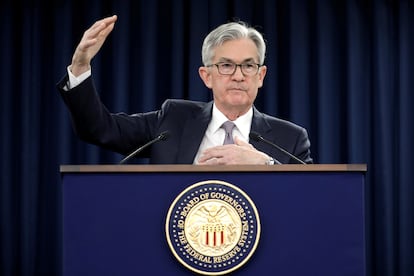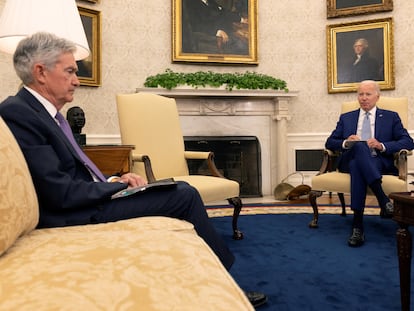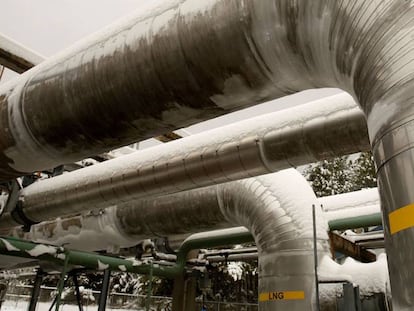The Federal Reserve approves the biggest interest rate hike since 1994
The central bank is tightening its policy against inflation with an increase of 0.75 percentage points and a target range of 1.5% to 1.75%


The Federal Reserve is stepping on the gas to stamp out inflation. The central bank of the United States on Wednesday approved an interest rate hike of three quarters of a point, the largest since 1994. The rise is greater than anticipated just a month ago, and is caused by the fact that inflation hit a new 30-year high in May at 8.6%. With this latest rate hike, which the market had been expecting, rates are in the range of 1.5% to 1.75%.
The last time rates rose three-quarters of a point was in November 1994, when inflation was hovering around 3% and then-Federal Reserve Chairman Alan Greenspan raised federal funds interest to 5% for fear that the economy would overheat. In his memoirs, Greenspan says that he is especially proud of having achieved a soft landing for the economy and avoided a recession.
“If the Federal Reserve waits for actual inflation to worsen before taking countermeasures, it will have waited too long,” Greenspan told Congress at the time. This is exactly what seems to have happened to the central bank now. Officials were wrong with their diagnosis. They thought that inflation was transitory yet it has already lasted too long. Now they have to take more radical measures.
This rate hike is the third of the year, after the quarter point rise in March and half a point in May. But it won’t be the last. The Fed is expected to act again in July, and in the fall, interest on federal funds will be at the highest levels since the 2008 financial crisis that led to the Great Recession. Since that year, rates have been at a maximum of 2.5%, the year before the pandemic.
What the Federal Reserve is looking for is the narrow path that will allow it to curb inflation without causing a recession. But some economists see just the opposite as more likely: stagflation, that is, that the tightening of monetary policy will stop the economy in its tracks, yet fail to curb price increases.
Tu suscripción se está usando en otro dispositivo
¿Quieres añadir otro usuario a tu suscripción?
Si continúas leyendo en este dispositivo, no se podrá leer en el otro.
FlechaTu suscripción se está usando en otro dispositivo y solo puedes acceder a EL PAÍS desde un dispositivo a la vez.
Si quieres compartir tu cuenta, cambia tu suscripción a la modalidad Premium, así podrás añadir otro usuario. Cada uno accederá con su propia cuenta de email, lo que os permitirá personalizar vuestra experiencia en EL PAÍS.
¿Tienes una suscripción de empresa? Accede aquí para contratar más cuentas.
En el caso de no saber quién está usando tu cuenta, te recomendamos cambiar tu contraseña aquí.
Si decides continuar compartiendo tu cuenta, este mensaje se mostrará en tu dispositivo y en el de la otra persona que está usando tu cuenta de forma indefinida, afectando a tu experiencia de lectura. Puedes consultar aquí los términos y condiciones de la suscripción digital.
More information
Últimas noticias
Most viewed
- Sinaloa Cartel war is taking its toll on Los Chapitos
- Oona Chaplin: ‘I told James Cameron that I was living in a treehouse and starting a permaculture project with a friend’
- Reinhard Genzel, Nobel laureate in physics: ‘One-minute videos will never give you the truth’
- Why the price of coffee has skyrocketed: from Brazilian plantations to specialty coffee houses
- Silver prices are going crazy: This is what’s fueling the rally










































